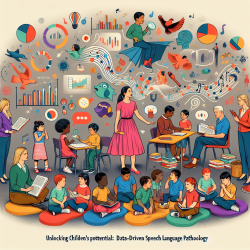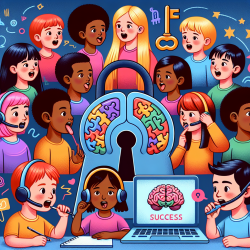Introduction
As practitioners in the field of speech-language pathology, we are constantly seeking ways to improve outcomes for children, particularly those with autism spectrum disorder (ASD). A recent study titled School Social Capital Mediates Associations Between ASD Traits and Depression Among Adolescents in General Population offers valuable insights into how school social capital can mediate the relationship between ASD traits and depression. This blog explores the implications of this research and how practitioners can use these findings to enhance their practice.
Understanding the Research
The study conducted by Mori et al. (2022) investigates the role of school social capital in mediating the relationship between ASD traits and depression in adolescents. The research highlights that adolescents with higher ASD traits often experience more severe depression. However, this association is partially mediated by the level of school social capital, which includes elements like trust, norms, and networks within the school environment.
The study also found that the mediation effect of school social capital varies by sex, with females experiencing a stronger mediation effect than males. This suggests that enhancing school social capital could be particularly beneficial for female students with ASD traits.
Implications for Practitioners
For practitioners working with adolescents with ASD traits, this research underscores the importance of fostering a supportive school environment. Here are some practical strategies to consider:
- Enhance School Connectedness: Encourage schools to create programs that promote a sense of belonging and connectedness among students. This could include peer mentoring programs, inclusive extracurricular activities, and social skills groups.
- Focus on Relationships: Support teachers and school staff in building trusting relationships with students. Training on ASD awareness and strategies for fostering positive interactions can be beneficial.
- Collaborate with Schools: Work closely with schools to identify students with higher ASD traits and tailor interventions that enhance their school social capital.
- Monitor Mental Health: Regularly assess the mental health of students with ASD traits and provide timely interventions to prevent the onset or worsening of depression.
Encouraging Further Research
While the study provides significant insights, it also opens avenues for further research. Practitioners are encouraged to explore additional factors that may influence the relationship between ASD traits and depression, such as family dynamics, community support, and individual coping strategies.
Moreover, investigating the impact of specific interventions aimed at increasing school social capital could provide valuable data on their effectiveness and inform best practices.
Conclusion
The findings from this study highlight the critical role of school social capital in mediating the relationship between ASD traits and depression in adolescents. By leveraging these insights, practitioners can develop targeted interventions that not only address the symptoms of depression but also enhance the overall school experience for students with ASD traits.
To read the original research paper, please follow this link: School Social Capital Mediates Associations Between ASD Traits and Depression Among Adolescents in General Population.










